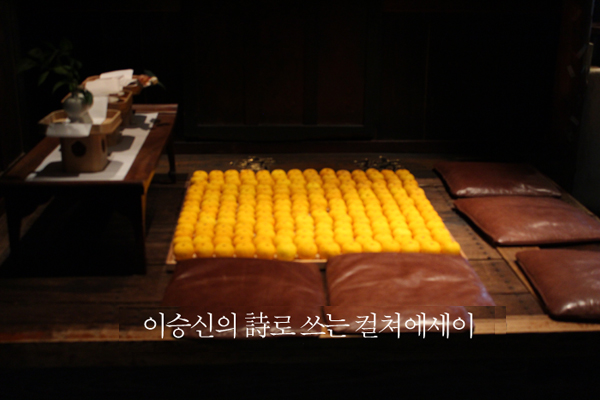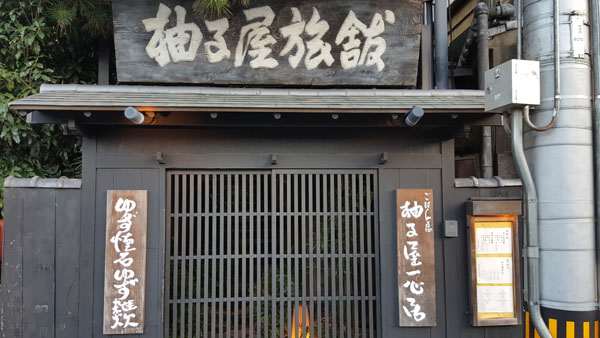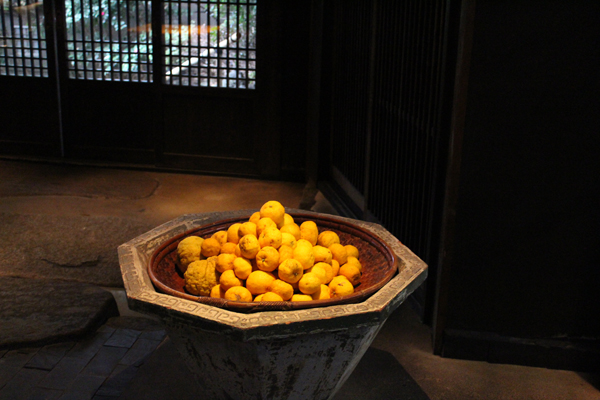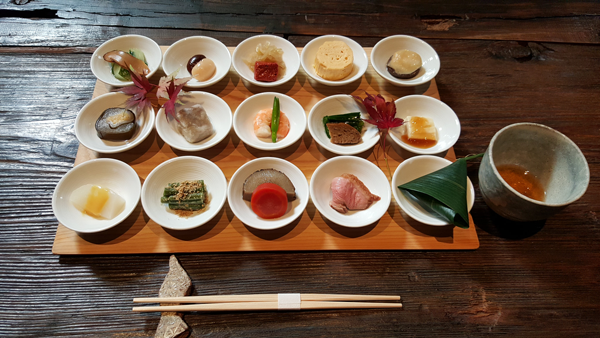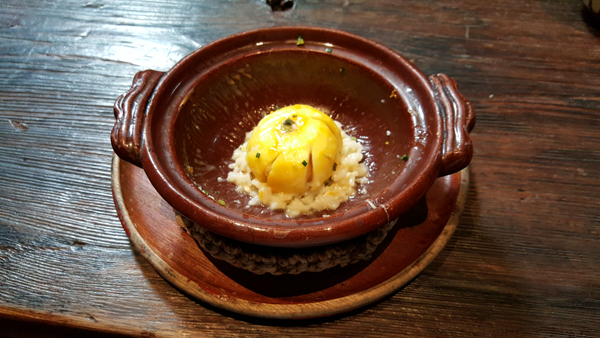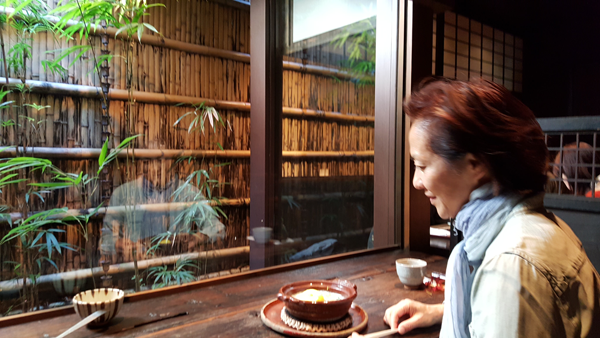Cuisine You always know if a restaurant is any good just by looking at it. There is a place called Yuzuya Ryokan. It is right next to Yasaka Shrine, a landmark in the middle of Gion, Kyoto. It’s located on a busy street, but I would always pass by the place whenever I walked along my favorite route, Nenenomichi, as the old narrow wooden door didn’t really stand out next to the big shrine. Only after passing the place several times did I spot the wooden door. On a signboard was written ‘Yuzuya Ryokan’ – meaning ‘citron inn’. The door opens automatically whenever someone goes in or out of the door, revealing a long, steep black stone staircase on top of which is a house . The Japanese place with the scent of a long history piqued my curiosity, so I went upstairs and the door automatically opened for me. At the elegant entrance carpeted with black pebbles, was a large jar full of yellow citrons, which caught my eye. A lady in a kimono greeted me, and I asked, “This place is a restaurant, right?” to which the lady replied, “Yes. And the upstairs is ryokan, the bathroom with hot spring water.” Originally, I just wanted a peak, but the old classic vibe that the place gave out was promising, so I followed the waitress and sat down. The lighting is dim and soft, a Japanese style backyard can be seen through the window, and water is rolling down a rock. The layout of tables is nice to look at, and I can hear Chinese. I guess I was the only one who didn’t know about this place. I was lucky to be seated, as I am told that there is usually no seat available without a reservation. For lunch, there are two citron courses for 5,000 yen and 10,000 yen each. My mouth had just watered at the sight of the big jar full of yellow citrons in the lobby. They serve 15 kinds of appetizers on small, round plates. Their color and shape are eye-catching. They look adorable and tasty. Uniquely Japanese daintiness and loveliness exude from their shrimp, fish, and vegetables. Just in time, it is autumn – and a branch of red maple leaves that looks like a baby’s hand is put on the dish. I drink tea as I eat the appetizers, which look too good to eat, using chopsticks. They serve soup, and then tasty fish as a main course. The taste of citron is added to all of them. Finally, they serve a dish of thick soup, on top of which is placed a citron with its insides mashed. A waitress in Kimono squeezes the citron with a spoon, and it tastes refreshing with rice. People usually think of sushi, sashimi, tempura and Kaiseki when someone mentions the name Japanese cuisine. Japanese cuisine is internationally considered haute cuisine. It is thought to be an art form. It is expensive in any country. Even among Japanese cities, Kyoto’s cuisine is particularly exquisite, beautiful and tasty - hence Kyoto cuisine is considered the best. Kyoto’s cuisine is called Kyo Ryori, and some people in Tokyo even take a Tokaido Shinkansen that takes 2 hours 15 min to eat dinner at Kyoto. I had sent out an essay that said Japanese food style was “Ichiju Sansai,” meaning one soup and three dishes. People from Japan replied that there are many Japanese places that offer one rice and one dish. Well, I guess we do have Japanese style rice ball with one plum in convenience stores in Korea, too. In any area, Japan has neat, calm, simple and humble aspects – it is the same in cuisine. I think Japanese virtue of non-possession, frugality and humbleness has been influenced by Buddhism, which Korea introduced to Japan a long time ago. On the other hand, at the breakfast and dinner from ryokan in Aomori in which the poetry monument of my mother stands, they served several dishes comparable to dinner in Jeonju. The memories of long course meals that I and my father were treated to in high-class restaurants of Kyoto are also colorful. There are many high-class restaurants charging more than tens of thousands yen like those in Kyoto. I didn’t have the time or leisure to do so while I was studying in university, but before and after that period, I have been searching for places that are affordable but classy and regard them as my asset. One of them is this citron place. The place is rich, dignified with historic air, and above all, offers tasty food, compared with the price of 5,000 yen. It is the taste I have never experienced anywhere else. It is one of my hidden treasures that I want to share with visitors from Japan and travelers from Seoul to Kyoto.
15 kinds of appetizers, Yuzuya - Kyoto Feb 2016
|

